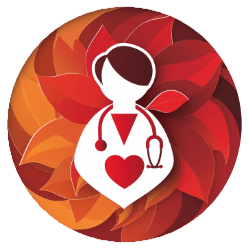Imagine you're a ship adrift in the vast digital ocean, where waves of notifications and the relentless tide of screen time threaten to capsize your well-being. As a healthcare worker, you're no stranger to stress, but the added pressure from constant digital bombardment can make you feel like you're sinking.
It's time to chart a course towards calmer waters, and the right digital detox strategies can serve as your compass. By carving out screen-free zones, implementing tech time-outs, prioritizing offline activities, customizing your notification settings, and practicing mindful tech use, you can navigate towards a more balanced life.
These strategies aren't just life rafts; they're the building blocks for a more serene existence both in and out of scrubs. Let's explore how adopting these practices can rejuvenate your spirit, enhance your productivity, and restore your peace of mind, steering you towards a harbor of digital well-being.
Key Takeaways
- Creating screen-free zones at home and work for improved well-being.
- Implementing tech time-outs and limiting app usage to reduce stress.
- Prioritizing offline activities and quality time with loved ones.
- Practicing mindful tech use and setting time limits for better mental health.
Establish Screen-Free Zones
In today's digital age, it's crucial for your well-being to carve out screen-free zones in your living and working spaces. As someone dedicated to serving others, you understand the toll that constant connectivity can take on both your health and overall well-being.
By establishing areas in your home, like the bedroom or dining area, as screen-free zones, you're taking a significant step towards creating a healthier environment for yourself and your loved ones.
Setting limits on technology use, especially during meals, family time, or in the workplace, allows you to reduce stress and be more present in the moment. It's about prioritizing time away from screens to foster genuine connections with those around you and with yourself.
Whether it's through reading, meditating, or simply enjoying a meal without the glow of a screen, these moments of disconnection can significantly enhance your quality of life.
Implement Tech Time-Outs
Scheduling regular tech time-outs is a vital step in reclaiming your mental space and reducing stress in your busy life as a healthcare worker. The constant bombardment of information and the pressure to stay connected can lead to mental health issues. Taking a break from constant screen time is essential for your well-being.
To effectively implement these tech time-outs, consider the following strategies:
- Limit App Usage: Use phone settings to restrict the time spent on apps. This reduces the temptation to continuously check your device, allowing you to focus on your surroundings and engage more deeply with the real world.
- Periodic Breaks: Integrate short, scheduled breaks throughout your day to step away from screens. Even a few minutes can refresh your mind and reduce digital fatigue, mitigating the negative impact of prolonged technology use.
- Create No-Tech Zones: Establish areas in your home or workplace where technology use is discouraged. This encourages you to engage in non-digital activities, fostering a healthier balance between screen time and personal interaction.
Prioritize Offline Activities
To truly unwind and mitigate stress, you should immerse yourself in offline activities that rejuvenate your mind and body. Engaging in offline hobbies and activities creates a healthy balance with technology, allowing you to disconnect and recharge.
As healthcare workers dedicated to serving others, prioritizing your mental and physical health is essential. Spending quality time with friends and family without the distractions of screens fosters deeper connections and enriches your social life. It's a digital detox strategy that not only benefits your mental health but strengthens your support network.
Make time for outdoor activities, exercise, and relaxation away from digital devices. These moments of physical engagement and connection with nature are vital for your well-being.
Face-to-face interactions and conversations should take precedence over virtual communication. The human element in these interactions provides comfort and a sense of belonging, crucial for stressed healthcare workers.
Allocate specific time slots for reading physical books, journaling, or engaging in mindfulness practices. These offline activities are powerful tools in your digital detox arsenal, helping you to maintain focus, reduce stress, and improve your overall health.
Customize Notification Settings
Adjusting your notification settings can significantly reduce the digital noise that adds to your stress, allowing you more peace throughout your day. In the demanding world of healthcare, where every moment counts, it's crucial to manage your digital interactions efficiently. Here's how you can use technology to help shield your peace:
- Prioritize App Notifications: Determine which apps are essential for your work and personal life. Customize their notification settings to ensure you're only alerted to what truly matters. This way, the constant buzz from social media or non-urgent apps won't interrupt your focus or rest.
- Schedule Do-Not-Disturb Periods: Utilize your device's do-not-disturb feature to create blocks of time during which only priority contacts can reach you. This can be especially useful during your work hours or dedicated relaxation times, ensuring you have uninterrupted periods to recharge or concentrate fully on your patients.
- Adjust Notification Sounds and Vibrations: Find a balance that keeps you informed without causing constant distraction. Lowering the volume of notifications or switching to vibration-only for non-essential apps can decrease the intrusive nature of device use, helping maintain a calmer environment.
Practice Mindful Tech Use
After customizing your notification settings to minimize digital distractions, it's equally important to practice mindful tech use to further enhance your well-being. Being intentional about when and how you engage with your phone and computer can significantly reduce unnecessary stress. Excessive exposure to screens can interfere with your mental health and overall sense of peace.
| Strategy | Benefit | How to Implement |
|---|---|---|
| Set Time Limits | Reduces mindless scrolling | Use apps to monitor and limit screen time |
| Prioritize Humans | Enhances real-world connections | Plan tech-free meetups with friends/family |
| Check-in Mentally | Improves awareness of mental state | Pause for mental health check-ups |
| Create Tech-free Zones | Encourages intentional tech use | Designate areas at home/work as no-phone zones |
Frequently Asked Questions
How to Do a Proper Digital Detox?
To ace a digital detox, start by unplugging during set times each day. Adjust your phone to limit distractions, create tech-free zones, and dive into activities like reading or hiking to recharge your soul.
Is Digital Detox Good for Mental Health?
Yes, digital detox can greatly benefit your mental health. It reduces stress, boosts creativity, and improves sleep, making you feel more connected and present. It's a powerful step towards a healthier, more balanced life.
What Are the Stages of the Digital Detox?
You start by acknowledging your need to disconnect. Next, you'll set boundaries, gradually reducing screen time. Then, create tech-free zones, embracing offline activities. Finally, regularly unplug to recharge, significantly improving your mental health and focus.
How Do I Escape Digital Detox?
You can't escape a storm by running into it; similarly, escaping a digital detox isn't the solution. Instead, embrace it, finding balance and peace away from screens to better serve others.





